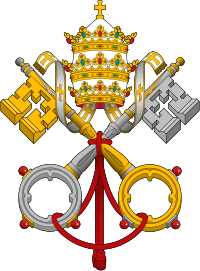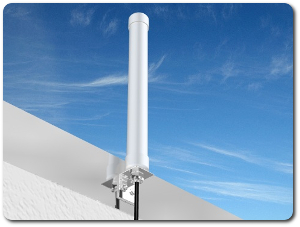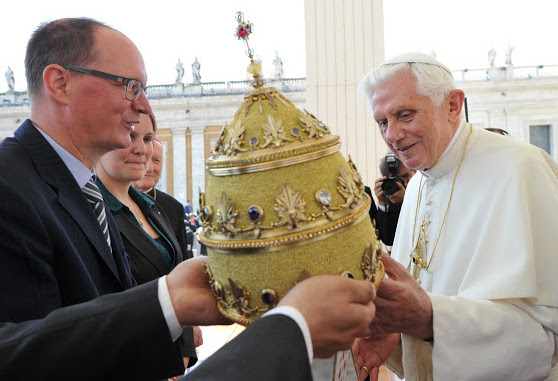How an ignition coil will revolutionize the solar, wind and electric car industry.
World news Saturday, September 17th, 2016Over 80+ years ago Nikola Tesla, inventor of the AC generator, removed the gasoline motor from a 1931 Pierce Arrow and replaced it with a brushless AC electric motor and drove the electric motor powered car at speeds of up to 90 mph. Since then it has been a mystery as to how he was able to power the Pierce Arrow using a 6 foot aerial antenna connected to a very small circuit box, 24 inches long, 12 inches wide and 6 inches high.
For decades inventors and scientists have been trying to figure out what that mystery box was. Solving that mystery would revolutionize the solar, wind and electric car industry. What they were concentrating on, in their research, was a complicated solution, whereas the solutions was staring them in the face every time they looked at their gas combustion engine car or truck. The mystery was solved since the very first gas combustion engine was built.
So, what was the very small circuit box that Nikola Tesla, inventor of the AC generator, built to power the 1931 Pierce Arrow? I just gave you a clue twice in this article, once at the beginning of this article and again in the first sentence of this paragraph.
Nikola Tesla built a generator, a very compact and portable generator. That very small generator’s primary function was to transform low voltage into more than enough voltage to power the brush less electric motor. What mass produced gas combustion engine part performs the exact same function? The ignition coil, also called a spark coil.
A car ignition coil’s primary function is to transform the car battery’s 12 volts into 30,000+ volts needed to create an electric spark in the spark plugs to ignite the fuel. It is a well know fact that a brushless electric motor is an electric motor driven by an electrical input, which lacks any form of commutator or slip ring. The motor requires some form of alternating current to turn, either from an AC supply, or an electronic circuit.
We know that Nikola Tesla replaced the gas combustion engine from a Pierce Arrow with a brushless AC electric motor. We also know that Tesla built a electronic circuit inside a box 24 inches long, 12 inches wide and 6 inches high. We also know that Telsa used the electronic circuit he built to power the brushless electric motor. Again, a brushless electric motor “requires some form of alternating current to turn, either from an AC supply, or an electronic circuit.” Now do you see how Tesla powered the brushless electric motor? With an ignition coil, which is an electronic circuit, that he built.
We know Tesla was an expert in electronics. He did invent the AC generator. So we know he would have the expertise to build a generator that could power an electric motor. The circuit box he assembled was a generator. Generators come in all shapes and sizes. An ignition coil is one the smallest electrical energy generator built. Its primary function is to transform the car battery’s 12 volts into thousands of volts, 30,000+ volts. It generates (outputs) more energy that is inputted. Being an expertise in electronics, Tesla was able to generate enough voltage (energy) to power a brushless electric motor and drive the electric motor vehicle at speeds up to 90 mph. He and all electricians today have the expertise to control or regulate the amount of voltage generated by an ignition coil. He had the know-how to generate enough output voltage to power an electric motor.
We can use Tesla ingenuity again today to not only revolutionize the electric car industry, but to revolutionize the solar and wind energy industry too. Simply by feeding solar and wind harnessed energy through a mass produced ignition coil, every solar panel and wind turbine’s low voltage can be transformed to the thousands of volts needed to power our homes, cottages and industries.
Short URL: https://presscore.ca/news/?p=11317


 The Halifax International Security Forum was founded in 2009 as a propaganda program within the German Marshall Fund (founded June 5, 1972 by West German Chancellor Willy Brandt) by the Crown in Canada using Crown Corp ACOA & DND funds. The Halifax International Security Forum is a front that is used to recruit top US, UK and Canadian gov and military officials as double agents for Canada's WWI, WWII enemy and wage new Vatican Germany Cold War.
High Treason: s.46 (1) Every one commits high treason who, in Canada (c) assists an enemy at war with Canada, ..., whether or not a state of war exists". Every one who, in Canada assists Canada's enemies wage "piecemeal WWIII" Cold War by organizing, funding and participating in the Germany government politically and militarily benefitting / lead Halifax International Security Forum is committing high treason.
The Halifax International Security Forum was founded in 2009 as a propaganda program within the German Marshall Fund (founded June 5, 1972 by West German Chancellor Willy Brandt) by the Crown in Canada using Crown Corp ACOA & DND funds. The Halifax International Security Forum is a front that is used to recruit top US, UK and Canadian gov and military officials as double agents for Canada's WWI, WWII enemy and wage new Vatican Germany Cold War.
High Treason: s.46 (1) Every one commits high treason who, in Canada (c) assists an enemy at war with Canada, ..., whether or not a state of war exists". Every one who, in Canada assists Canada's enemies wage "piecemeal WWIII" Cold War by organizing, funding and participating in the Germany government politically and militarily benefitting / lead Halifax International Security Forum is committing high treason.
 Please take a moment to sign a petition to
Please take a moment to sign a petition to 









































 1917 Code of Canon Law, Canon 185 invalidates (voids) all papacies since October 26, 1958 due to the fact Cardinal Giuseppe Siri was elected Pope on the Third ballot on Oct 26 1958 but the new Pope Gregory XVII was illegally prevented from assuming the office. A Pope was elected on October 26, 1958. Thousands of people witnessed a new Pope being elected by seeing white smoke and millions were informed by Vatican radio broadcasts beginning at 6:00 PM Rome time on October 26, 1958. The papacy of Francis, Benedict, John Paul II, John Paul I, Paul VI, John XXIII and any and all of their respective doctrines, bulls, letter patents and the Second Vatican Council are all invalidated (having no force, binding power, or validity) by Canon 185 because the 1958 conclave of cardinals elected Cardinal Giuseppe Siri Pope on Oct 26 1958. Cardinal Giuseppe Siri accepted the papacy by taking the name Pope Gregory XVII but was illegally prevented from assuming his elected office.. According to Canon 185 Cardinal Angelo Giuseppe Roncalli illegally assumed the papacy 2 days later by fraud and grave fear, unjustly inflicted against Cardinal Giuseppe Siri who was lawfully elected Pope Gregory XVII. Because no Pope has been lawfully elected since October 26, 1958 the Holy See (la Santa Sede/Seat) remains vacant.
1917 Code of Canon Law, Canon 185 invalidates (voids) all papacies since October 26, 1958 due to the fact Cardinal Giuseppe Siri was elected Pope on the Third ballot on Oct 26 1958 but the new Pope Gregory XVII was illegally prevented from assuming the office. A Pope was elected on October 26, 1958. Thousands of people witnessed a new Pope being elected by seeing white smoke and millions were informed by Vatican radio broadcasts beginning at 6:00 PM Rome time on October 26, 1958. The papacy of Francis, Benedict, John Paul II, John Paul I, Paul VI, John XXIII and any and all of their respective doctrines, bulls, letter patents and the Second Vatican Council are all invalidated (having no force, binding power, or validity) by Canon 185 because the 1958 conclave of cardinals elected Cardinal Giuseppe Siri Pope on Oct 26 1958. Cardinal Giuseppe Siri accepted the papacy by taking the name Pope Gregory XVII but was illegally prevented from assuming his elected office.. According to Canon 185 Cardinal Angelo Giuseppe Roncalli illegally assumed the papacy 2 days later by fraud and grave fear, unjustly inflicted against Cardinal Giuseppe Siri who was lawfully elected Pope Gregory XVII. Because no Pope has been lawfully elected since October 26, 1958 the Holy See (la Santa Sede/Seat) remains vacant.
 Hold the Crown (alias for temporal authority of the reigning Pope), the Crown appointed Governor General of Canada David Lloyd Johnston, the Crown's Prime Minister (servant) Stephen Joseph Harper, the Crown's Minister of Justice and Attorney General Peter Gordon MacKay and the Crown's traitorous military RCMP force, accountable for their crimes of treason and high treason against Canada and acts preparatory thereto. The indictment charges that they, on and thereafter the 22nd day of October in the year 2014, at Parliament in the City of Ottawa in the Region of Ontario did, use force and violence, via the staged false flag Exercise Determined Dragon 14, for the purpose of overthrowing and besieging the government of Canada contrary to Section 46 of the Criminal Code. In a society governed by the rule of law, the government and its officials and agents are subject to and held accountable under the law. Sign the online
Hold the Crown (alias for temporal authority of the reigning Pope), the Crown appointed Governor General of Canada David Lloyd Johnston, the Crown's Prime Minister (servant) Stephen Joseph Harper, the Crown's Minister of Justice and Attorney General Peter Gordon MacKay and the Crown's traitorous military RCMP force, accountable for their crimes of treason and high treason against Canada and acts preparatory thereto. The indictment charges that they, on and thereafter the 22nd day of October in the year 2014, at Parliament in the City of Ottawa in the Region of Ontario did, use force and violence, via the staged false flag Exercise Determined Dragon 14, for the purpose of overthrowing and besieging the government of Canada contrary to Section 46 of the Criminal Code. In a society governed by the rule of law, the government and its officials and agents are subject to and held accountable under the law. Sign the online  Two of the most obvious signs of a dictatorship in Canada is traitorous Stephen Harper flying around in a "military aircraft" and using Canadian Special Forces "military" personnel from JTF2 and personnel from the Crown's traitorous martial law "military" RCMP force as his personal bodyguards.
Two of the most obvious signs of a dictatorship in Canada is traitorous Stephen Harper flying around in a "military aircraft" and using Canadian Special Forces "military" personnel from JTF2 and personnel from the Crown's traitorous martial law "military" RCMP force as his personal bodyguards.




































